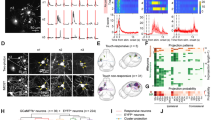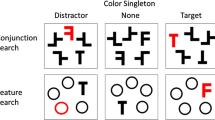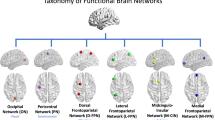Abstract
Hippocampus stores spatial representations, or maps, which are recalled each time a subject is placed in the corresponding environment. Across different environments of similar geometry, these representations show strong orthogonality in CA3 of hippocampus, whereas in the CA1 subfield a considerable overlap between the maps can be seen. The lower orthogonality decreases reliability of various decoders developed in an attempt to identify which of the stored maps is active at the moment. Especially, the problem with decoding emerges with a need to analyze data at high temporal resolution. Here, we introduce a functional-connectivity-based decoder, which accounts for the pairwise correlations between the spiking activities of neurons in each map and does not require any positional information, i.e. any knowledge about place fields. We first show, on recordings of hippocampal activity in constant environmental conditions, that our decoder outperforms existing decoding methods in CA1. Our decoder is then applied to data from teleportation experiments, in which an instantaneous switch between the environment identity triggers a recall of the corresponding spatial representation . We test the sensitivity of our approach on the transition dynamics between the respective memory states (maps). We find that the rate of spontaneous state shifts (flickering) after a teleportation event is increased not only within the first few seconds as already reported, but this instability is sustained across much longer (> 1 min.) periods.








Similar content being viewed by others
References
Barton, J. P., & Cocco, S. (2013). Ising models for neural activity inferred via selective cluster expansion Structural and coding properties. Journal of Statistical Mechanic, P03002.
Barton, J., Leonardis, E. D., Coucke, A., & Cocco, S. (2016). Ace: adaptive cluster expansion for maximum entropy graphical model inference. Bioinformatics.
Bradley, A. P. (1997). The use of the area under the roc curve in the evaluation of machine learning algorithms. Pattern Recognition, 30(7), 1145–1159.
Cocco, S., & Monasson, R. (2011). Adaptive cluster expansion for inferring boltzmann machines with noisy data. Physical Review Letters, 106(9), 090601.
Cocco, S., & Monasson, R. (2012). Adaptive cluster expansion for the inverse ising problem: convergence, algorithm and tests. Journal of Statistical Physics, 147(2), 252–314.
Cocco, S., Leibler, S., & Monasson, R. (2009). Neuronal couplings between retinal ganglion cells inferred by efficient inverse statistical physics methods. Proceedings of the National Academy of Sciences, 106(33), 14058–14062.
Cocco, S., Monasson, R., Posani, L., & Tavoni, G. (2017). Functional networks from inverse modeling of neural population activity. In Pubblication on Curr Opinion in Systems Biology.
Colgin, L. L., Leutgeb, S., Jezek, K, Leutgeb, J. K., Moser, E. I., McNaughton, B. L., & Moser, M.-B. (2010). Attractor-map versus autoassociation based attractor dynamics in the hippocampal network. Journal of Neurophysiology, 104(1), 35–50.
Fenton, A. A., & Muller, R. U. (1998). Place cell discharge is extremely vairiable during individual passes of the rat through the firing field. Proceedings of the National Academy of Science USA, 95, 3182–3187.
Garcia, D. (2010). Robust smoothing of gridded data in one and higher dimensions with missing values. Computational Statistics and Data Analysis, 54(4), 1167–1178.
Hanley, James A, & McNeil, Barbara J (1982). The meaning and use of the area under a receiver operating characteristic (roc) curve. Radiology, 143(1), 29–36.
Jaynes, E. T. (1957). Information theory and statistical mechanics. Physical Review, 106(4), 620.
Jezek, K., Henriksen, E. J., Treves, A., Moser, E. I., & Moser, M.-B. (2011). Theta-paced flickering between place-cell maps in the hippocampus. Nature, 478(7368), 246–249.
Knierim, J. J. (2006). Neural representations of location outside the hippocampus. Learning and Memory, 13 (4), 405–415.
Koyama, S., & Paninski, L. (2010). Efficient computation of the maximum a posteriori path and parameter estimation in integrate-and-fire and more general state-space models. Journal of Comparative Neuroscience, 29, 89.
Lin, S. C., & Gervasoni, D. (2008). Defining global brain states using multielectrode field potential recordings. In: Nicolelis, M. A. L., editor, Methods for Neural Ensemble Recordings. CRC Press/Taylor and Francis.
MacKay, D. J. C. (2003). Information theory, inference and learning algorithms. Cambridge University Press.
Makarov, V. A., Panetsos, F., & De Feo, O. (2005). A method for determining neural connectivity and inferring the under- lying network dynamics using extracellular spike recordings. Journal of Neuroscience Methods, 244, 165.
Metz, C. E. (1978). Basic principles of roc analysis, Seminars in Nuclear Medicine, (Vol. 8 pp. 283–298): Elsevier.
Monasson, R., & Cocco, S. (2011). Fast inference of interactions in assemblies of stochastic integrate-and-fire neurons from spike recordings. Journal of Comparative Neuroscience, 31, 199–227.
Monasson, R., & Rosay, S. (2015). Transitions between spatial attractors in place-cell models. Physical Review Letters, 115, 09810.
Okatan, M., Wilson, M. A., & Brown, E. N. (2005). Analyzing functional connectivity using a network likelihood model of ensemble neural spiking activity. Neural Computation, 17(9), 1927– 1961.
O’Keefe, J., & Dostrovsky, J. (1971). The hippocampus as a spatial map. preliminary evidence from unit activity in the freely-moving rat. Brain Research, 34(1), 171–175.
Pencina, M. J., D’Agostino, R. B., D’Agostino, R. B., & Vasan, R. S. (2008). Evaluating the added predictive ability of a new marker: from area under the roc curve to reclassification and beyond. Statistics in Medicine, 27(2), 157.
Pillow, J. W., Shlens, J., Paninski, L., Sher, A., Litke, A. M., Chichilnisky, E. J., & Simoncelli, E. P. (2008). Spatio-temporal correlations and visual signalling in a complete neuronal population. Nature, 454(7207), 995–999.
Posani, L., Cocco, S., Jezek, K., & Monasson, R. (2017). Persistence of positional information in unstable spatial representations in CA3. Submitted to CNS 2017.
Rigotti, M., Barak, O., Warden, M. R., Wang, X. -J., Daw, N. D., Miller, E. K., & Fusi, S (2013). The importance of mixed selectivity in complex cognitive tasks. Nature, 497(7451), 585–590.
Schneidman, E., Berry, M. J., Segev, R., & Bialek, W. (2006). Weak pairwise correlations imply strongly correlated network states in a neural population. Nature, 440(7087), 1007–1012.
Stevenson, I. H., Rebesco, J. M., Miller, L. E., & Körding, K. P. (2008). Inferring functional connections between neurons. Current Opinion in Neurobiology, 18(6), 582–588.
Tavoni, G., Ferrari, U., Battaglia, F. P., Cocco, S, & Monasson, R. (2015). Inferred model of the prefrontal cortex activity unveils cell assemblies and memory replay. bioRxiv, page 028316.
Tavoni, G., Cocco, S., & Monasson, R. (2016). Neural assemblies revealed by inferred connectivity-based models of prefrontal cortex recordings. Journal of Computational Neuroscience, 41, 269–293.
Tkačik, G., Prentice, J. S., Balasubramanian, V., & Schneidman, E. (2010). Optimal population coding by noisy spiking neurons. Proceedings of the National Academy of Sciences, 107(32), 14419–14424.
Treves, A., & Rolls, E. T. (1994). Computational analysis of the role of the hippocampus in memory. Hippocampus, 4(3), 374–391.
Truccolo, W., Eden, U. T., Fellows, M. R., Donoghue, J. P., & Brown, E.P. (2005). A point process framework for relating neural spiking activity to spiking history, neural ensemble,and extrinsic covariate effects. Journal of Neurophysiology, 93, 1071–89.
Wills, T. J., Lever, C., Cacucci, F., Burgess, N., & O’Keefe, J. (2005). Attractor dynamics in the hippocampal representation of the local environment. Science, 308(5723), 873–876.
Zhang, K., Ginzburg, I., McNaughton, B. L., & Sejnowski, T. J. (1998). Interpreting neuronal population activity by reconstruction: unified framework with application to hippocampal place cells. Journal of Neurophysiology, 79(2), 1017–1044.
Acknowledgements
We are indebted to S. Rosay, who contributed to the early stage of the data analysis. We are grateful to J. Tubiana and A. Treves for useful discussions and suggestions. This study benefited from partial fundings from the CNRS-InphyNiTi INFERNEUR project and from GACR 15-20008S, Progres Q-39 and NPU I LO1503 of the Czech Republic.
Author information
Authors and Affiliations
Corresponding author
Ethics declarations
Conflict of interests
The authors declare that they have no conflict of interest.
Additional information
Action Editor: Alessandro Treves
Appendices
Appendix A: ACE inference convergence details
The ACE inference procedure of Ising model parameters was applied with L 2-norm regularization of strength γ = 5/B, where B is the total number of time bins (Barton et al. 2016). Details on the convergence are given in Table 2. The full code for Adaptive Cluster Expansion can be downloaded from the GitHub repo https://github.com/johnbarton/ACE/.
Appendix B: Comparison of neuron activities across spatial maps
Similarly to Fig. 2 where we compare the Ising parameters inferred from the population activity in the two environments A,B, we show in Fig. 9 the probabilities of firing of all cells i (in fixed time bins with Δt = 120 ms) and the pariwise correlations (defined as the probability that cells i,j fire together in a bin minus the product of their individual firing probabiltiies). We see that no substantial correlation is found in the pairwise statistics of cells across the two environments.
Appendix C: Dependence of J i j on temporal binning
Couplings inferred for time-bin duration Δt = 120 ms are compared to the ones inferred for Δt = 10 ms in Fig. 10. Many couplings are very similar across the two binning choices. Differences, in particular null couplings in just one of the two cases, mostly arise from sampling differences. For 10 ms time windows, it is rare to find two neurons active within the same time bin, while, for larger time bins, there is a smaller number B of time bins, which forces us to consider larger ACE threshold 𝜃. Couplings inferred using the theta-binning discretization procedure for data are very similar to the ones inferred using a fixed time binning of 120 ms (average duration of theta cycles), see Fig. 11. A discussion of the independence of Ising couplings from the bin duration Δt was done by Cocco et al. (2009).
Rights and permissions
About this article
Cite this article
Posani, L., Cocco, S., Ježek, K. et al. Functional connectivity models for decoding of spatial representations from hippocampal CA1 recordings. J Comput Neurosci 43, 17–33 (2017). https://doi.org/10.1007/s10827-017-0645-9
Received:
Revised:
Accepted:
Published:
Issue Date:
DOI: https://doi.org/10.1007/s10827-017-0645-9







